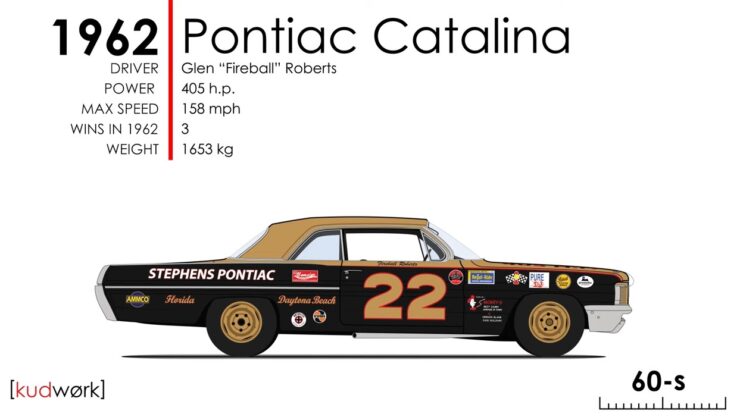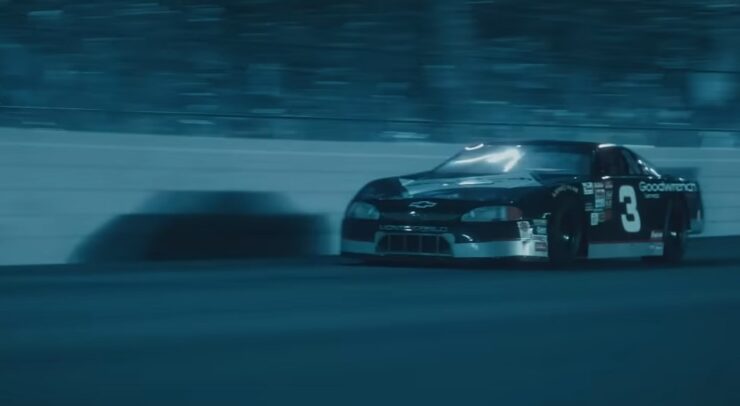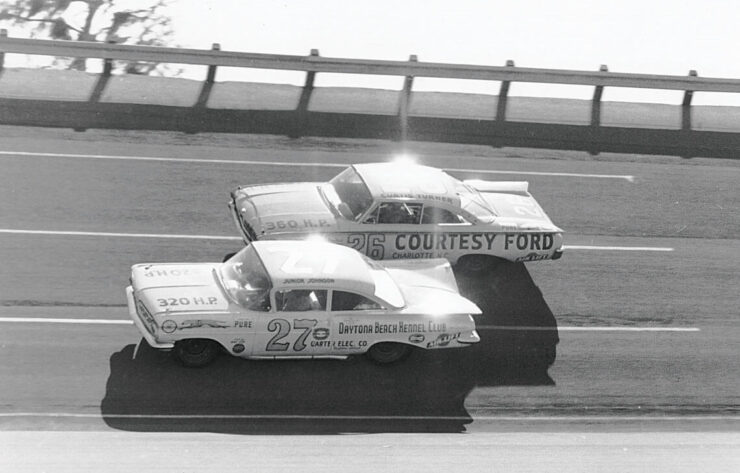Step back in time to the genesis of stock car racing, and you’ll find yourself surrounded by the roaring engines, thundering exhausts, and adrenaline-fueled excitement that marked the birth of NASCAR. The humble beginnings of this multi-billion-dollar industry can be traced back to the dusty dirt tracks and the daring drivers who pushed their machines to the limit. But just how fast were those early NASCAR cars?
In this comprehensive article, we’ll take a deep dive into the history and evolution of the first NASCAR cars, exploring the speeds they achieved, the technical advancements that drove them forward, and the iconic drivers that put them on the map. Strap in, and let’s embark on this thrilling journey!
The Origins of NASCAR and Stock Car Racing
Prohibition and Moonshiners
The roots of NASCAR can be traced back to the 1920s and 1930s, during the Prohibition era in the United States. The ban on alcohol led to a surge in the production and distribution of illegal moonshine, with bootleggers modifying their cars for speed and agility to outrun the law enforcement on their tail.
These modified cars became the first “stock” cars, named as such because they appeared to be regular, off-the-shelf models. In reality, these vehicles boasted souped-up engines, reinforced suspensions, and other modifications that made them perfect for high-speed chases on treacherous backcountry roads.
Birth of a Racing Culture
As the Prohibition era came to an end, bootleggers found themselves with cars that were built for speed and a penchant for the adrenaline rush of high-stakes driving. They began to organize informal races to showcase their skills and prove who had the fastest car.
These early races laid the groundwork for what would later become NASCAR. By the late 1940s, stock car racing had gained significant popularity, with various regional organizations hosting their own events. In December 1947, NASCAR was officially formed, with the first race taking place on June 19, 1949, at the Charlotte Speedway.
The First NASCAR Cars

A Diverse Field of Competitors
The first NASCAR race featured a diverse field of cars from different manufacturers, including Ford, Oldsmobile, Hudson, and Cadillac. The majority of the cars were pre-World War II models, with many still bearing modifications from their moonshining days.
While there was no specific class or category for these early NASCAR cars, they were predominantly large, powerful sedans, often referred to as “Strictly Stock” cars. Drivers favored them for their robust build and powerful engines, which allowed them to withstand the rigors of high-speed racing.
The 1949 NASCAR Strictly Stock Champion: The Oldsmobile 88
The first NASCAR Strictly Stock champion was the Oldsmobile 88, driven by Red Byron. With a 303-cubic inch (ci) Rocket V8 engine and Hydra-Matic transmission, the Oldsmobile 88 was a formidable competitor on the track. This powerful engine produced around 135 horsepower (hp), propelling the car to speeds in excess of 80 miles per hour (mph).
While this might seem slow compared to modern NASCAR vehicles, which can reach speeds of over 200 mph, it was quite impressive for the time. The Oldsmobile 88’s winning combination of speed, power, and handling made it a force to be reckoned with in the early days of NASCAR.
The Evolution of Speed in NASCAR
The 1950s: The Hudson Hornet and the Rise of the “Fabulous” Fifties
As NASCAR entered the 1950s, the sport began to evolve rapidly. Manufacturers started to recognize the potential of stock car racing as a marketing tool and began to develop purpose-built race cars. One of the most iconic cars of this era was the Hudson Hornet.
The Hudson Hornet, with its innovative “step-down” design, low center of gravity, and powerful Twin H-Power 308-cubic inch straight-six engine, took the NASCAR world by storm. With a horsepower output of 170-210 hp (depending on the specific model), the Hornet was capable of reaching speeds over 100 mph. Driven by legendary racers like Marshall Teague, Herb Thomas, and Tim Flock, the Hudson Hornet dominated the racing circuit from 1951-1954.
During this time, other manufacturers also started to make their mark on NASCAR. Chrysler, for example, introduced its powerful HEMI engine, which produced a staggering 300 hp and allowed its cars to reach speeds well over 120 mph. This era of racing, marked by innovative designs and a rapid increase in horsepower and speed, earned the nickname “The Fabulous Fifties.”
The 1960s: The Superspeedways and the Aero Wars

As NASCAR entered the 1960s, the sport continued to evolve, with new, larger tracks called “superspeedways” pushing the limits of speed even further. The advent of these high-speed tracks led to the development of sleeker, more aerodynamic cars designed to harness the power of the wind.
The late 1960s saw the famous “Aero Wars” between Ford and Chrysler, as both manufacturers sought to develop the fastest, most aerodynamic race cars. Ford’s Torino Talladega and Mercury Cyclone Spoiler II went head-to-head with Chrysler’s Dodge Charger Daytona and Plymouth Superbird. These cars, equipped with massive engines and radical aerodynamic modifications, were capable of reaching speeds well over 180 mph.
The 1970s: Restrictor Plates and the Modern Era
The thrilling speeds achieved during the Aero Wars led to concerns about safety. NASCAR officials began to implement regulations designed to limit the top speed of race cars, starting with the introduction of restrictor plates in 1970. These devices, which limit the airflow to the engine, effectively capped the horsepower and top speeds of NASCAR cars.
Despite these restrictions, the sport continued to evolve, with manufacturers constantly seeking ways to improve performance within regulatory boundaries. The 1970s saw the rise of the Chevrolet Monte Carlo, Ford Thunderbird, and Buick Regal, among others, as prominent competitors in the NASCAR circuit.
Final Words
From their humble beginnings as modified moonshine runners to the sleek, aerodynamic machines of the 1960s and beyond, the first NASCAR cars represent a fascinating chapter in automotive history. These early racers pushed the limits of speed and engineering, achieving top speeds that seemed impossible at the time.
As we look back on the speeds of the first NASCAR cars, it is essential to remember the pioneering spirit and passion for racing that drove these early drivers and engineers. Their innovations and determination laid the groundwork for the modern NASCAR we know and love today, and their legacy will continue to inspire generations of racers and automotive enthusiasts for years to come.

